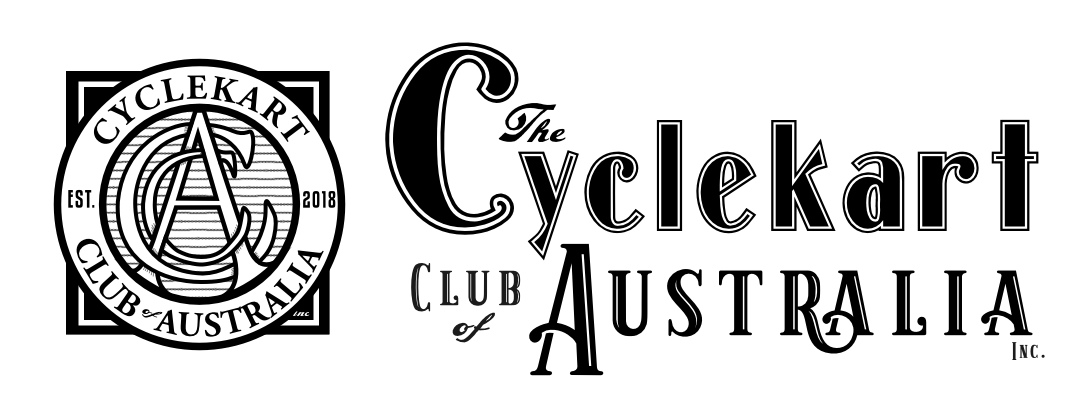One important aspect of your build that it is worth spending some time on is getting the front axle and steering geometry set up correctly. This will determine how your Cyclekart drives and handles, and can be the difference between something that is a pleasure to drive and something that handles like a supermarket trolley. Any schoolboy with a lego set can make up basic go-kart steering, but there's a little more to it than what you might think.
Ackerman geometry
The Ackerman principle is based on the fact that when a vehicle travels a circular path, the outside wheel will trace a larger diameter circle than the inner wheel.
For the vehicle to be able to maintain the correct wheel angle so that the wheels trace the correct path according to the diameter of circle that the vehicle travels in, the steering geometry needs to be correct.

This is achieved fairly simply by ensuring that the tie rods connect to the steering arms at a point intersecting a line that is drawn between the king pin and the centre of the rear axle.

Caster angle

Caster angle is the angle of the king pin when viewed from the side of the car. A positive caster angle places the king pin so that it points at the road slightly in front of the contact patch of the tyre. This has the effect of providing self-centering to the steering so that the steering has a natural tendency to return to point straight ahead. This improves handling stability.
If no caster angle is designed in to the steering geometry the car will feel very lively and have a tendency to wander. Generally a positive caster angle of 7-8 degrees is appropriate.
King pin inclination angle

The king pin inclination angle is the angle of the king pins when viewed from the front of the car. A positive angle places the top of the king pins further inwards than the bottom. As with caster angle, the king pin inclination angle also helps to center the steering. When the steering turns, the angle of the king pin forces the wheels downwards, which raises the suspension slightly. As the natural equilibrium wants to oppose this, the net effect is to return the wheels to center.
There is also a secondary action relating to the king pin inclination angle called scrub. This is the imaginary pivot point about which the wheels turn and is the point where an imaginary line drawn through the king pin hits the ground. If this point coincides with the centre of the tyre, it is known as a zero scrub radius. A zero scrub radius can make the handling squirrely and unstable in cornering. A positive scrub radius is where the point falls to the inside of the tyre contact patch and a negative scrub radius falls to the outside. Both will make the steering heavier / more stable. Generally aim to set the king pin inclination at about 7 degrees.
Toe in
Toe in describes how far from parallel the front wheels are when viewed from above. If the front of the wheels is closer together it is called 'toe in'. If the rear of the wheels are closer together it is called 'toe out'. Generally a small amount of toe in promotes better straight line stability at the expense of a small amount of steering response. Setting the front wheel parallel will have the tendency to make the steering lighter and more responsive but the car may feel squirrely at speed. Generally a small amount of toe (6mm) provides a good stable steering response.
Toe is most easily measured between the inside of the rims at the same height each side of the axle and is expressed as the difference between the front and rear of the rim rather than the angle. Expressed this way toe can very easily be measured and set with a tape measure.

Camber angle

Camber angle is the angle from vertical that the wheels are mounted at when viewed from the front (or rear) of the vehicle.
Whilst camber plays an important role in handling geometry on independent suspensions setups using square treaded tyres, it plays much less of a role for vehicles with fixed axles that use rounded motorcycle tyres.
